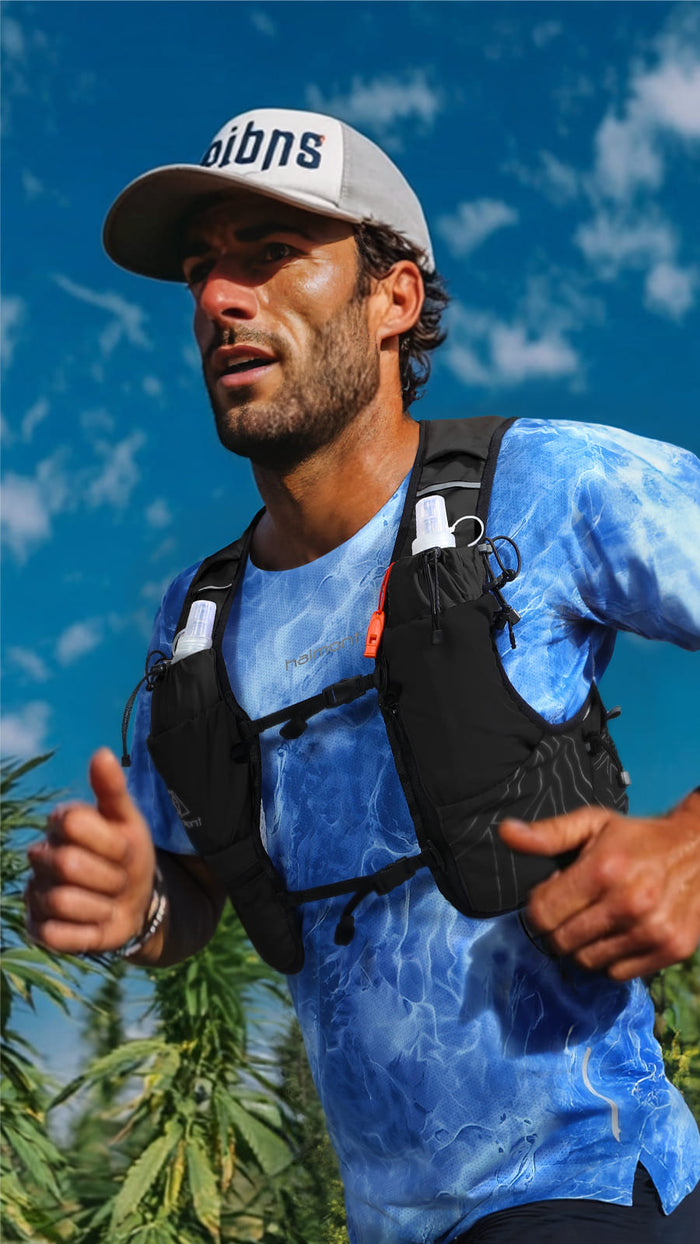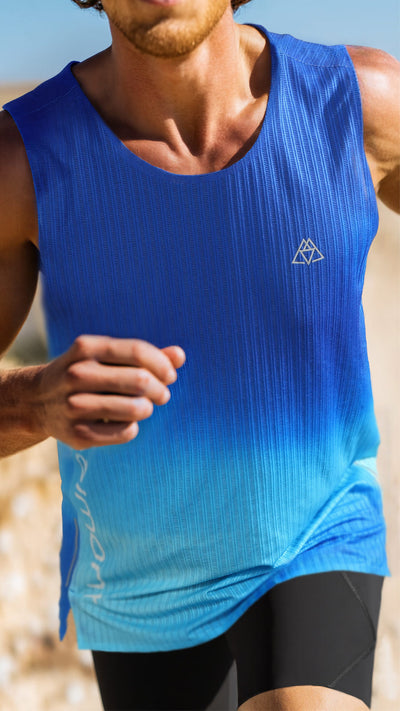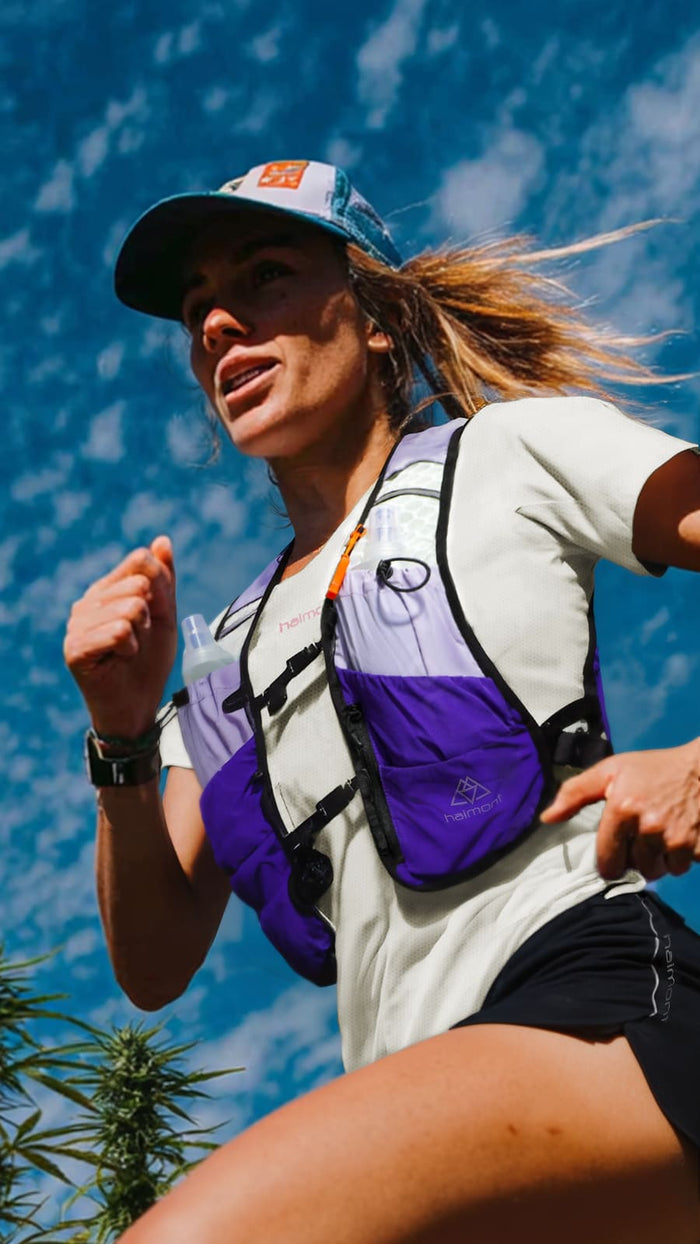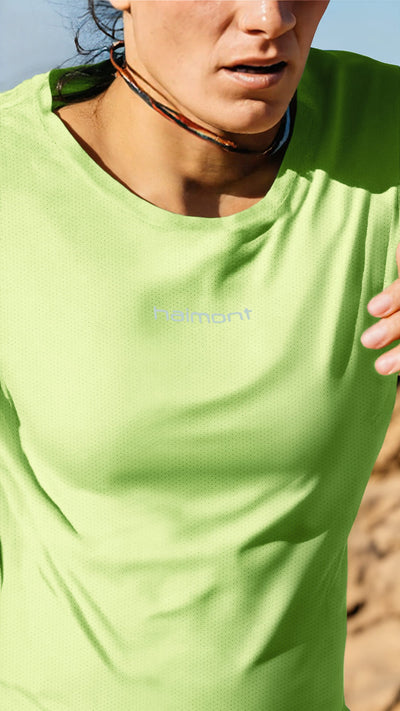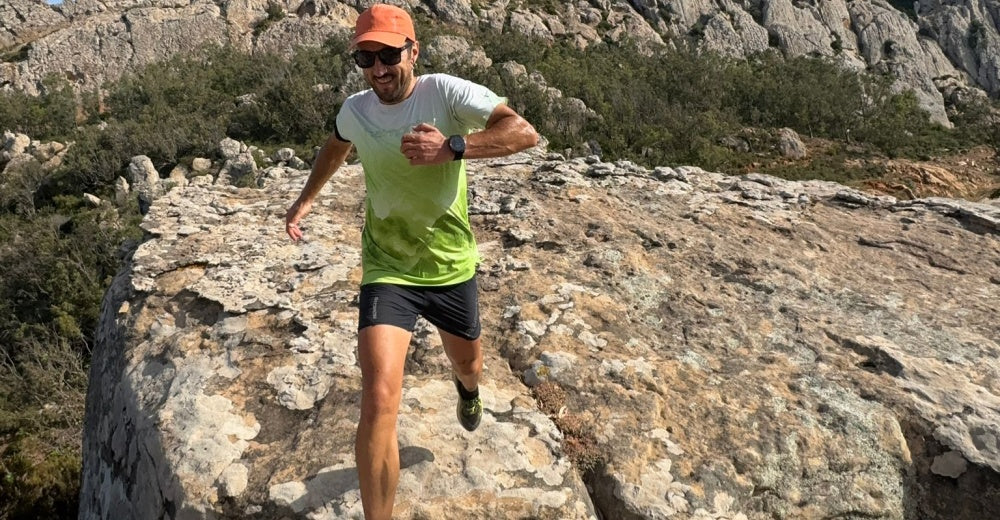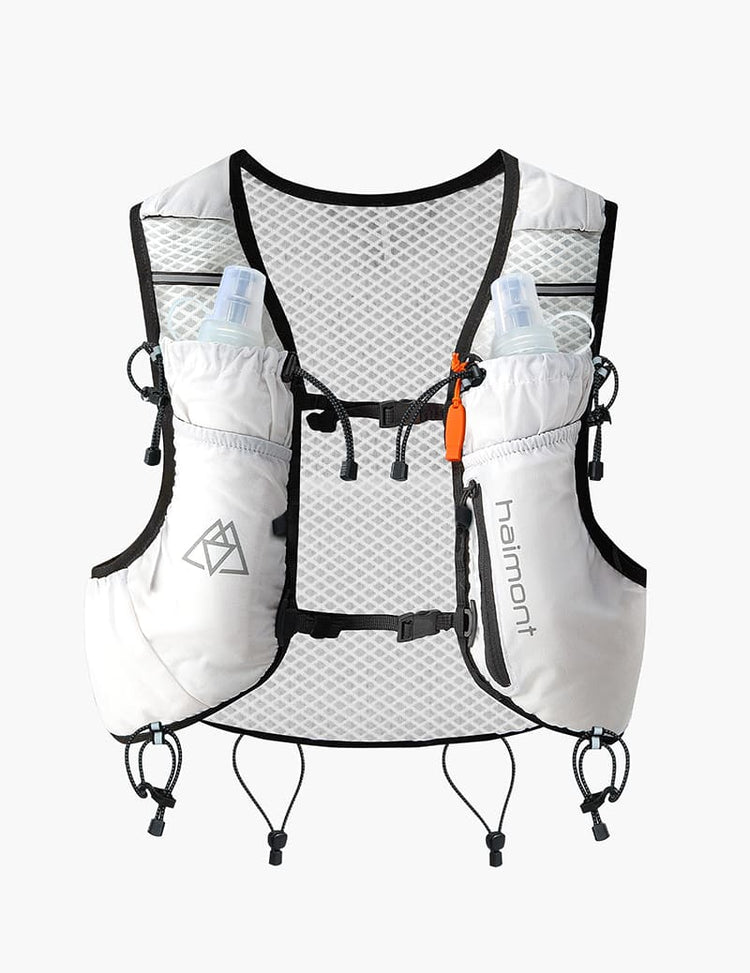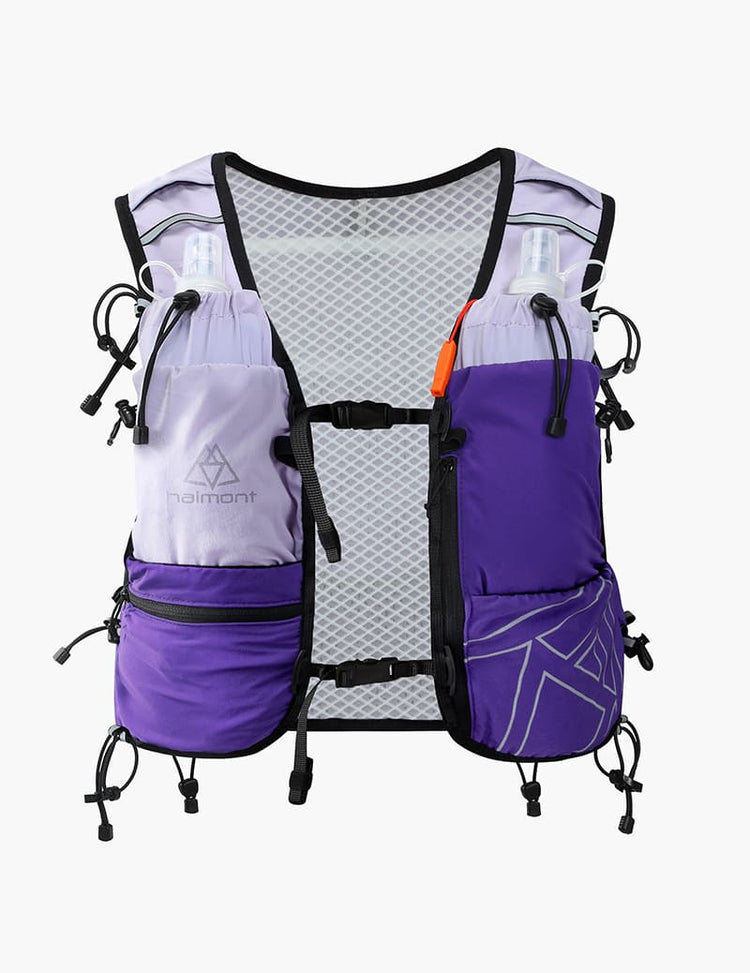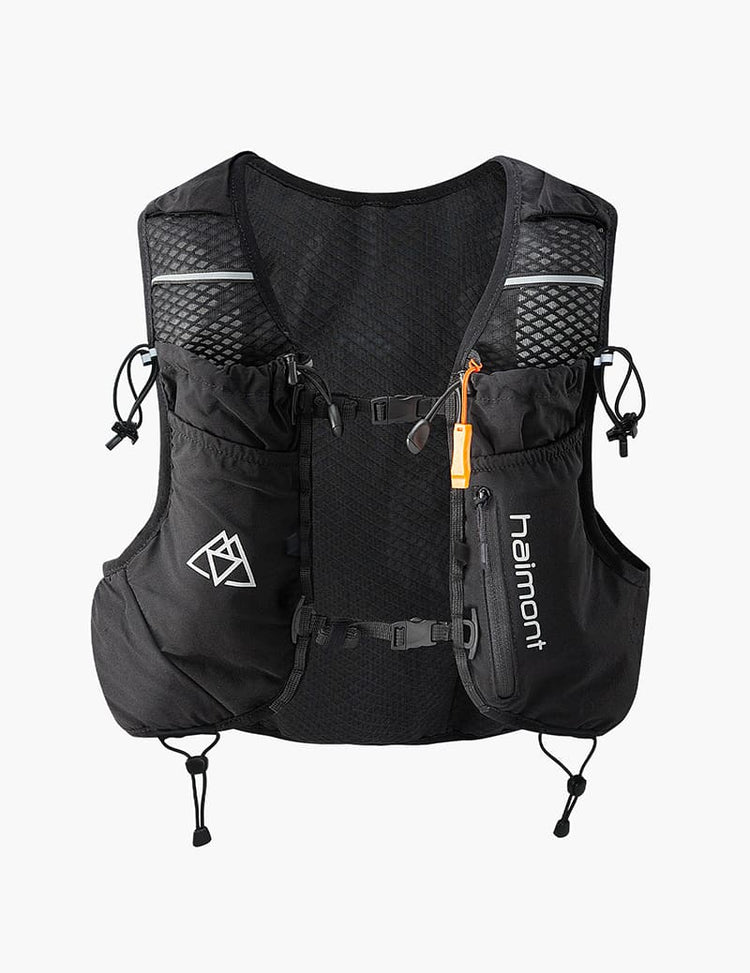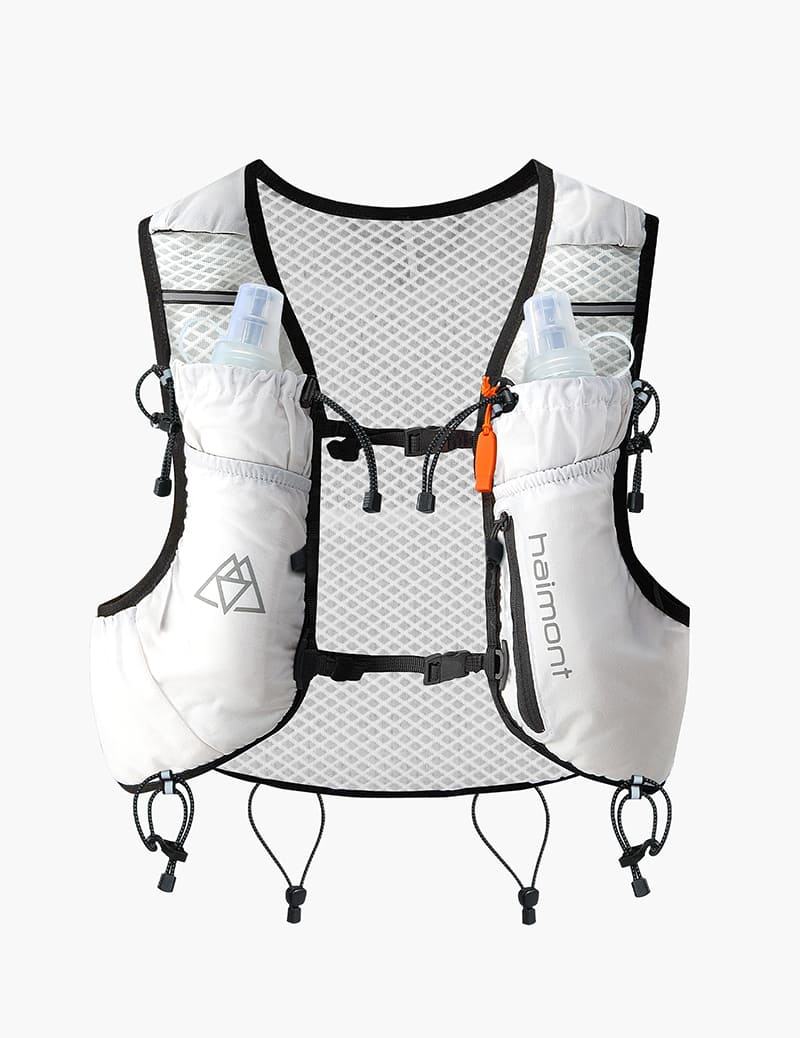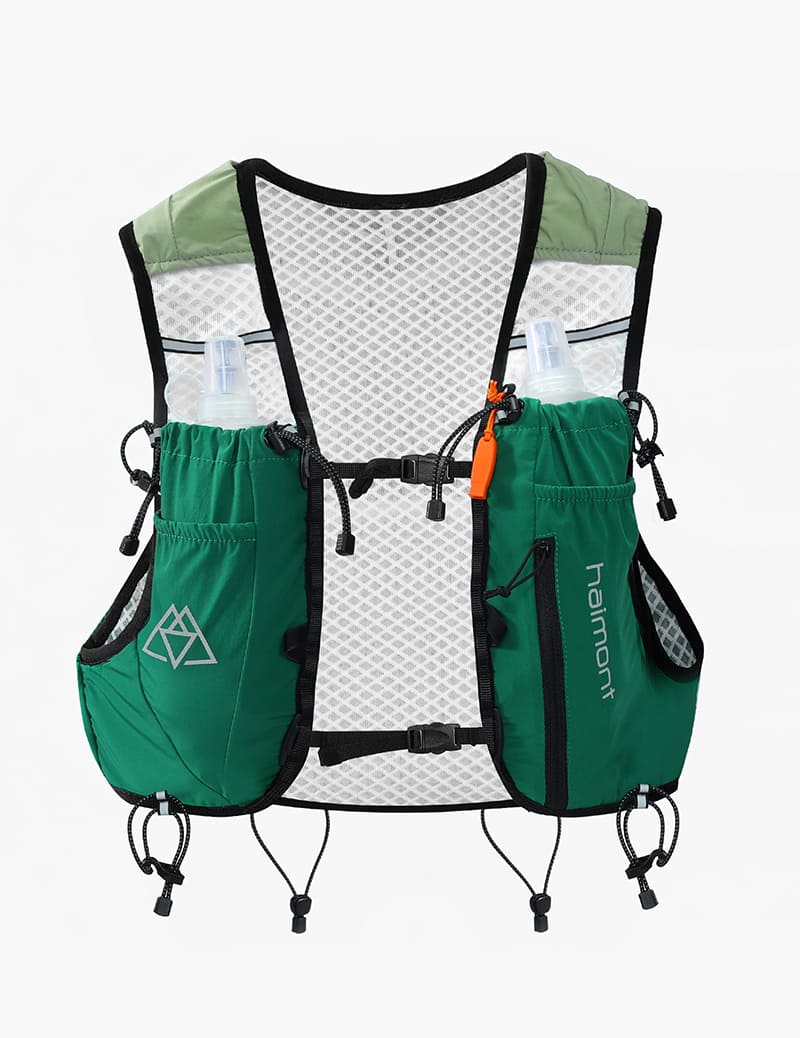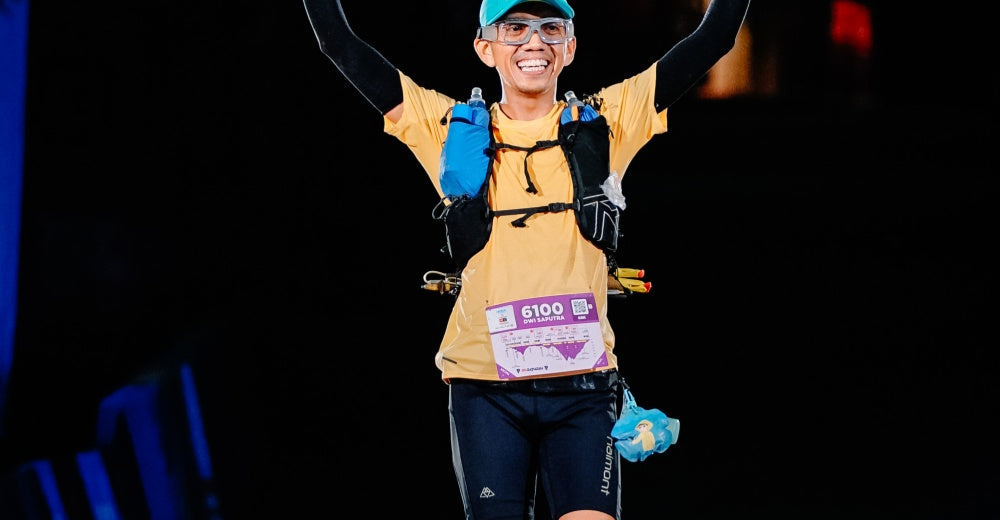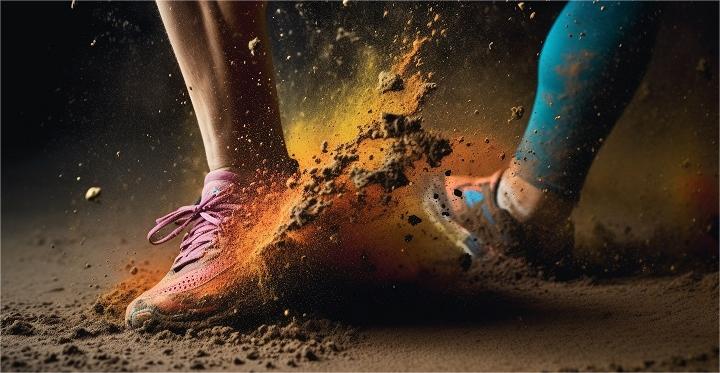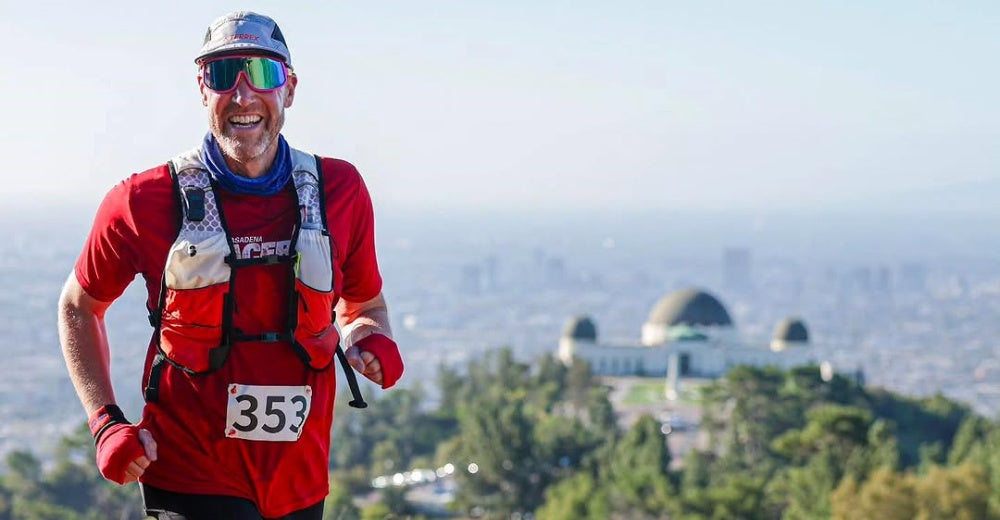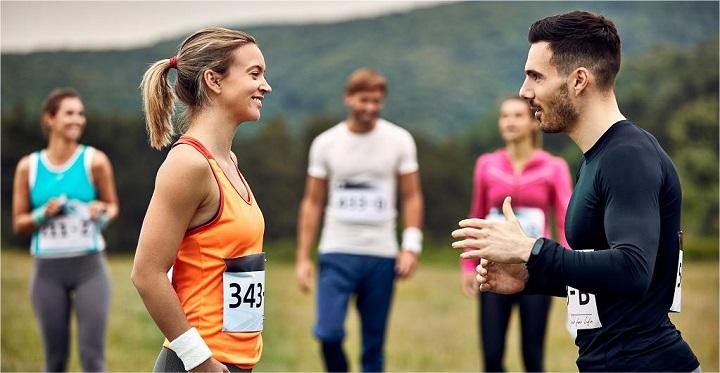Table of contents
7月、山は熱波の中で目覚め、朝の光が森に差し込みます。すべての林道、尾根、谷がトレイルランナーに旅立ちを呼びかけています。スピードと距離を追求するランナーにとって、7月は体力の限界に挑戦する黄金の季節であるだけでなく、自然や自分自身と何度も競い合う機会でもあります。
この季節には、30キロの短距離から100キロのウルトラマラソンまで、トレイルランニングのイベントが頻繁に開催されます。高温、多湿の環境、不安定な山の天気が一歩一歩を重くします。激しい登りの後、余分な衣服や余分な水のボトルが次の上り坂でラクダの背中を折る最後の一押しになることに気づくでしょう。トレイルランニングは決して持久力だけの問題ではありません。装備の削減によってより多くの体力を保持し、体温を安定させ、摩擦によるダメージを減らす方法は、すべてのランナーが直面しなければならない課題です。
したがって、軽量化はもはや選択肢ではなく戦略であり、さらに限られた物理的予算の中でブレードの重量をすべて使い切るというコンセプトにもなっています。このミニマリズムは、ますます多くの7月のランナーの選択肢です。彼らは装備を削って山での走りを加えています。より遠く、より安定して、より良いコンディションで走るために。

軽さは裸で走ることではなく、科学的に重量を配分する技術です
軽量化は何も持たないことを意味するのではなく、リスク管理、エネルギー配分、携行効率の最適解を見つけることです。trail running の本当の軽量哲学は、山の環境の理解、身体能力への敬意、時間とリズムの精密な管理にあります。少なければ良いというわけではなく、必要なものだけを、ちょうど良く持つことです。
なぜトレイルランニングは軽量である必要があるのか?
トレイルランニングでは、重量が1キログラム増えるごとに、長期的な蓄積された身体エネルギー消費が大幅に増加します。特に暑い季節や高地のルートでは顕著です。研究によると、重量が5%増加すると、技術的な山岳路でのトレイルランナーの身体エネルギー消費は約12%-18%増加し、このエネルギーは後半で頼る命綱の予備となる可能性があります。
したがって、合理的な軽量化はかっこよさや見せびらかしのためではなく、実用的な身体的戦略的配置です。
どのように科学的に重量を配分するか?
軽量装備の鍵は少なくすることではなく、合理的な配分と明確な機能です。
- ミッションに不可欠な装備を優先:ハイドレーションシステム、エネルギー補給、ウインドブレーカー、携帯電話、緊急用品など、山や森での独立生存を保証するものです。
- 重心は体の中心軸に近い位置に分布:背中のコアエリア(肩甲骨とウエストラインの間)に重量を集中させることで、走行姿勢への干渉を最小限に抑え、ジャンプや腰への負担を軽減します。
- 前後のバランス設計で走行安定性を向上:soft water bottles とエネルギージェルを前胸部に配置し、いつでも使えるニーズに応え、lightweight clothes と予備の物資は背面のメインコンパートメントに配置することで、重心が自然にバランスされ、走行姿勢がより安定します。
軽装備のもう一つの価値:体を自然に走らせること
重い装備は2つの追加の隠れた危険をもたらします:
- リズムの中断:走行中に頻繁に停止して装備を探したり位置を調整したりする必要がある
- 疲労損傷の原因:不均等な重量が片側の筋肉の過労と姿勢の乱れを引き起こし、それが股関節や膝などの慢性的な問題を招きます
明確な仕切りとフィット構造を持つ軽量バックパック+科学的な荷重戦略は、あなたに**その存在を忘れさせ**、真にランナーのフロー状態に入り、ルート、呼吸、ケイデンスに集中させます。
軽量戦闘服:速乾から無感覚まで、どの層も妥協できません
7月の暑い山では、不適切な衣服は1キロの登山よりも苦痛かもしれません。
夏のトレイルランニングでは、着用システムは温度調節と摩擦保護という2つの核心的な役割を担います。高強度の運動中、ランナーの体幹温度は急速に上昇し、大量の汗が分泌されます。衣服が速やかに湿気を吸い取り通気性があり、タイムリーに乾燥しなければ、蒸れ、べたつき、擦れ、さらには短時間で湿って冷えることになり、あせも、水ぶくれ、低体温症などの問題を引き起こします。重症の場合はレースの棄権に直結します。
速乾は基本であり、無感覚が最高の状態です。
上半身:速乾性と通気性は体幹温度を守る保護機構です
夏のトレイルランニング中、人間の主な発熱部位は胸、背中、脇、上腕です。衣服の素材が汗や熱を素早く伝導できない場合、これらの部位に湿気と熱が蓄積し、汗のバリアを形成します。
推奨構成 | 速乾半袖Tシャツ+弾性アイススリーブ(日焼け防止スリーブ)
- 素材選択:ポリエステル繊維+メッシュ構造または微細孔構造、一方向の吸湿発散技術(吸湿発散)を備え、汗を皮膚表面から生地の外層へ素早く移動させます
- 構造設計:大面積のフラットシームを避け、摩擦のないロックシーム+レーザーカットを使用。特に肩、サイドウエスト、脇のような摩耗の激しい部分に適用
- カフス:弾性アイススリーブは紫外線を防ぐだけでなく、リッジベントで物理的な冷却バリアを形成します
下半身:フィット感、耐摩耗性、速乾性、この三位一体は分解できません
上半身に比べて、夏のトレイルランニングでは脚のウェアが軽視されがちですが、実際にはこれが多くのランナーの痛みの原因です。下着のめくれ、内ももの擦れ、汗の蓄積によるあせも…これらの小さな問題は30KMを超えると急速に拡大します
推奨構成 | 2-in-1 軽量トレイルランニングショーツ(ゆったりしたアウター層+圧縮されたインナー層)
- インナー層:高弾性で通気性のあるコンプレッション素材が密着サポートを提供し、太ももの摩擦を防ぎます
- アウター層:軽量で柔らかく撥水性のある生地は、動きの拡張と速乾・発汗に適しています
- ウエストバンド構造:幅広のウエストバンド+多機能ネットポケットデザインでフィット感を高め、収納スペースを拡大
着用システムは動的な保護ネットです:各レイヤーがゲーム全体の体験に影響を与えます
軽量の戦闘服は単なる身体感覚だけでなく、ランナーのリズム維持と安全管理に直接影響を与えます:
|
レイヤー |
機能 |
失敗の結果 |
推奨キーワード |
|
トップ |
汗吸収 / 速乾 / 日焼け防止 |
べたつく汗、不安定な体温 |
軽量、速乾、メッシュ、UPFプロテクション |
|
ボトムス |
擦れ防止 / サポート / 通気性 |
太ももの水ぶくれ、擦り傷、動きの制限 |
2-in-1デザイン、コンプレッションレイヤー、ストレッチフィット |
|
ベースレイヤー |
フィット / 抗菌 / 通気性 |
鼠径部の発疹、プライベートエリアの不快感 |
シームレス、抗菌ライニング、柔らかいストレッチ |
|
アクセサリー |
防風 / 冷却 / 取り外し可能 |
日焼け、風冷え、腕の火傷 |
アームスリーブ、ヘッドバンド、ウインドブレーカー |
軽量装備の利点は、機能を犠牲にせずに各層を減らせることです。

軽装を着ることは快適さだけでなく、レースのリズムを積極的にコントロールすることももたらします
多くの経験豊富なランナーはこう感じています—服が乾いて体に密着し摩擦がないと、全体の状態がより集中しスムーズになります;逆に、脇の下で常に擦れるTシャツや脚に張り付くショーツは、30キロ走った後に多くの注意を消耗します。
軽装の隠れた利点:
- 集中力を高め、身体的不快感への意識を減らす
- 走行姿勢の安定性を向上させ、服装の干渉による歩行の変化を避ける
- 装備の調整時間を節約し、安定したペースを確保する
水分とエネルギー:軽装は補給を怠ることを意味しません
軽装は決して無視を意味しません。トレイルランニングでは、水分とエネルギー管理が生理的安全の基盤です。特に7月の高温多湿で心拍数が高い環境では、体は非常に速く水分と電解質を失います。補給が不十分だと、脱水、痙攣、エネルギー切れだけでなく、めまい、熱中症、低体温症などの危険な症状を引き起こします。
したがって、軽量装備を追求しながらも、ランナーは効率的な補給と合理的な装備のバランスをマスターしなければなりません。
高温のクロスカントリーにおける生理的課題:速い補給と速い吸収が真の軽さです
夏のトレイルランニングイベントでは、ランナーは3つの核心的な課題に直面します:
|
課題 |
原因 |
解決策 |
|
熱中症 |
持続的な発汗+高い心拍数 |
迅速な水分補給+安定した電解質摂取 |
|
電解質の損失 |
汗で大量に失われるナトリウム、カリウム、マグネシウム |
塩カプセル、電解質ドリンクを毎時摂取 |
|
エネルギー枯渇 |
炭水化物の貯蔵不足+吸収低下 |
高濃度エネルギージェル+タイミングを決めた摂取スケジュール |
これはつまり、持ちすぎてもいけませんが、持たなさすぎてもいけないということです。解決策は:補給の洗練+携行構造の最適化です。
オフロード補給リズムの推奨:空腹時に食べるのではなく、定期的かつ定量的に補給する
高温の競技では胃腸の吸収効率が低下するのが普通なので、空腹や喉の渇きを感じてから補給するのではなく、事前補給のリズムに従ってください:
|
時間 |
行動 |
説明 |
|
開始の15分前 |
エネルギージェルを1つ+少量の水を摂取する |
基準となる血糖値を確立する |
|
30〜45分ごとに |
エネルギージェルを1つ摂取する(約100 kcal) |
安定した炭水化物供給を維持する |
|
毎時間 |
塩カプセル/電解質を1回分摂る |
痙攣やめまいを防ぐ |
|
10〜15分ごと |
水を少しずつ飲む(2〜3口) |
水分バランスと循環を維持する |
|
約2時間ごと(任意) |
エネルギーバーを1本食べる |
前半の段階から炭水化物不足を補う |
どうやって荷物を減らしても止まらないか? -- トラックの資源と装備の連携を活用する
経験豊富なランナーは知っている:自分で持つことと外部支援のバランスを見つけること。
- 補給所の配置と内容を事前に調べる:水や固形食がどこにあるかを知ることで、前半の荷物の重さを減らすのに役立つ
- トレーニング中に耐性と必要量をテスト:誰もが同じ量の塩タブレットやエネルギージェルを必要とするわけではないので、自分の最小有効量を見つける
- 装備を使ってリズミカルに補給:例えば、ソフトボトルに手が届きほぼ空になったら、同時にエネルギージェル1パックを摂ることを思い出し、自動的なリズムループを形成する
トレイルランニング装備の最小限の冗長性:無視できない小さなアイテムたち
軽量主義が支配するトレイルランニング装備戦略の中で、一見不要に思える装備がありますが、実際には命を救い、スピードアップし、危険を回避するための最小限の冗長性です。小型で軽量ですが、非常に高い安全マージンと効率値を持ち、高温、高地、長時間の山越えなどのシーンに特に適しています。
本当に軽量な装備の構成は、単に少ないだけでなく、ちょうど良く余裕があることも重要です。
緊急用ブランケット
推奨理由:
- わずか40〜60gの重さで、天候が急変した際に一時的な断熱バリアを提供できます。
- 低温での夜間ランニング、尾根の急な変化、停滞や救助待ちなどに適しています。
- ほとんどの国際トレイルランニングイベント(UTMB、HK100など)で必携装備とされています。
使用シナリオの例:
標高2,000メートル以上の山岳区間では、昼間30°Cでも曇りや強風、救助待ちの際に体温が急激に下がります。サーマルブランケットは体熱の90%以上を反射し、戦術的な寒さ対策を提供します。
推奨収納場所:
バックパックのメインコンパートメントの上層または底部サイドポケットに、手のひらサイズに丸めて簡単にアクセスできます。
多機能ヘッドスカーフ/マジックスカーフ(Buff)
推奨理由:
- 日よけ、防風、吸汗、ほこり除け、多目的
- ヘッドバンド、首カバー、マスク、簡易包帯として使え、夏は水で冷却にも使えます。
使用シナリオの例:
夏の灼熱の尾根区間では、頭巾を濡らして首に巻くと効果的に冷却できます。夜の下り坂では口に巻いて冷風や蚊の吸入を防ぎます。
推奨収納場所:
直接身に着けるか、手首やバックパックのショルダーストラップに結びつけて、目的に応じて便利かつ素早く調整できます。
ミニ救助ホイッスル
推奨理由:
- 重さは通常5g未満ですが、迷子、捻挫、滑落などで助けを呼べない時に役立ちます。
- 山中では声を出すよりも音の伝わりがはるかに良く、特に密林や峡谷では聞こえやすいです。
使用シナリオの例:
50KMの山岳レースで、ランナーが斜面の茂み帯に滑り落ちました。重傷ではありませんでしたが動けませんでした。彼のホイッスルがボランティアが彼の位置を見つける鍵となりました。
推奨収納場所:
すべてのHaimontバックパックには、ホイッスルが一体化されたショルダーストラップが付いているか、胸ストラップのループに直接取り付けることができます。
折りたたみ式環境に優しいゴミ袋/ミニドライバッグ
推奨理由:
- ランナーがエネルギージェルの包装、紙タオル、ボトルキャップなどのゴミを自分で収納できるようにし、環境に配慮したイベント規則に沿っています。
- 濡れた服、予備の靴下、防水携帯電話袋などの収納に使用できます。
使用シナリオの例:
レース後の最後の補給ポイントにはゴミ箱がありません。ランナーは空のジェル袋をドライバッグに入れて、他の装備が汚れるのを防ぐことができます。
Haimontブランド製品のハイライト:
Trail 8L pro vest pack は環境に優しい収納袋機能を備え、軽量で防水、巻いても場所を取らず、国際的なオフロード環境保護基準を満たしています。
摩擦防止パッチ / 防水バンドエイド / マイクロ伸縮包帯
推奨理由:
- あらかじめつま先、脇の下、内ももに摩擦防止パッチを貼り、水ぶくれや擦り傷を防ぎます
- 伸縮包帯は突然の捻挫や筋肉の緊張に対する応急処置用包帯として使用されます
使用シナリオ例:
レース後半で足裏に熱さを感じたら、摩擦防止パッチを適時に貼ることができ、足首を捻挫してもゆっくり完走できる場合は、包帯がサポートを提供し、怪我の悪化を防ぎます。
推奨収納場所:
- 摩擦防止ステッカー:バックパックのサイドポケットまたはウエストベルトポーチ
- 伸縮包帯:衣類層の近くのメインコンパートメントに巻いて収納
夜間ランニング用反射ステッカー / ミニLEDクリップライト
推奨理由:
- 夜間ステージやレース後に、反射ステッカーと小型LEDライトが視認性と認識性を向上させます
- 山道でボランティアや他のランナーにぶつかられないようにして安全性を高める
推奨収納場所:
反射ステッカーはバックパックの背面やズボンの側面に貼り、小さなライトは襟の後ろやバックパックのストラップにクリップで留めます。
メイン装備(バックパック、水筒、服)を効率化した後、これらのミニマリスティックで冗長な小物は、わずか数十グラムの重さしか占めませんが、重要な瞬間に役立つかもしれません-
- あなたの持久力の限界を広げる
- 環境によるダメージからあなたを守る
- レース完走やPB達成のチャンスを勝ち取る
ランナーは戦士ではなく、武装する必要はありません;しかしランナーはストリーカーでもなく、天候や運に盲目的に頼ることはできません。
これらの小物はミニマリズムの下でのあなたの細やかな準備であり、また山や荒野への敬意でもあります。
ミニマリズムはスタイルではなく、リズムコントロールの延長です
多くの人の目には、ミニマル装備はスタイルの選択や軽量ランナーの美の追求の表れのように見えます。しかし本当のトレイルランナーの目には、ミニマリズムは表面的な単純さではなく、リズムとエネルギーの深いコントロールです。
山道を4時間、5時間、あるいは10時間以上走ると、装備があなたに仕えるのではなく、あなたと装備がゲームのリズムを操作していることに気づくでしょう。軽さはよりスムーズに走るためであり、スムーズさは自分のリズムをコントロールし、リズムに振り回されないためのものです。
真のミニマリズムは干渉を減らしリズムを維持すること
トレイルランニングでリズムが崩れる原因は大きなミスではなく、蓄積された小さな干渉であることが多い:
- 水筒を見つけるのに5秒かかった
- ベルトの跳ねが呼吸に影響を与えた
- 摩擦と不快感が集中を妨げた
- 足裏に水ぶくれができた後、さらに1キロ歩かなければならないこと
これらの小さな干渉物は徐々に集中力を蝕み、最終的にはペースを乱し心拍数のコントロールを失わせます。
ミニマリスト装備の価値は、これらの干渉を可能な限り排除することにあります—持ち物すべてに明確な役割、明確な位置、明確なリズムインターフェースがあるのです。
ミニマリスト装備はどのようにリズムロックを助けるのか?
トレイルランニングは3つのステージに分けられ、それぞれ異なるリズム安定能力が必要であり、軽量装備が正確な調整を提供します:
|
ステージ |
ペーシング目標 |
ミニマルギアがそれを支える方法 |
|
初期段階(0~15km) |
過熱を避け、安定した出力を維持する。 |
軽量で跳ねない装備が自然な呼吸リズムを可能にし、簡単にアクセスできるフラスコが不必要な停止を減らします。 |
|
中間段階(15~35km) |
効率を最大化し、エネルギーの変動を管理する。 |
素早くアクセスできるエネルギージェルと整理されたコンパートメントが、手間取りや停止時間を最小限に抑えます。 |
|
最終段階(35km以上) |
精神的疲労と戦い、ペース配分に頼って完走する。 |
快適で擦れず、乾燥し安定した装備は、気を散らすことなく集中力を維持するのに役立ちます。 |
軽さは目的ではなく、中断しないための前提条件です。
ミニマリズムの背後には、自分自身の身体のリズムへの深い信頼があります。
真のミニマリストランナーは何も持ってこないのではなく、持ってくるものはすべてちょうど良いのです:
- 彼はどれくらいの頻度で喉が渇くか、そして塩の錠剤がどれだけ必要かを知っており、多すぎず少なすぎずです。
- 彼はトラックのどこが最も日当たりが良く、どこが最も寒いか、どこで速く走れるか、そしてどこでエネルギーを節約する必要があるかを知っています。
- 彼はトレーニングでリズムの習慣を形成しており、装備はこのリズムを維持するのを助けるだけで、変数を作り出すものではありません。
最小限の装備は最終的にランナーの自分の身体のコントロールと認識を試します。

トレイルランニングは、持続力と判断力についての対話です。そして本物のランナーは知っています:体がどれだけ走れるかは脚だけでなく、背中の重さのすべてのグラムによっても決まるということを。
7月の暑い山や森では、軽量装備はもはやスタイルの選択ではなく、高強度のクロスカントリーに対処するための実用的な戦略です。これは単に速く走るためだけでなく、負担を減らし、暑い日差し、山風、雨嵐、そして気分の落ち込みの中でより多くのコントロールと余裕を与えます。単に荷物を減らすのではなく、身体、環境、リズムの理解に基づいた正確で効率的かつ妨げのない動作システムを確立することです。
軽さとは、本当に重要なものをより見えるようにすることです - あなたの足のリズム、心の中の目標、そして山での自由。


